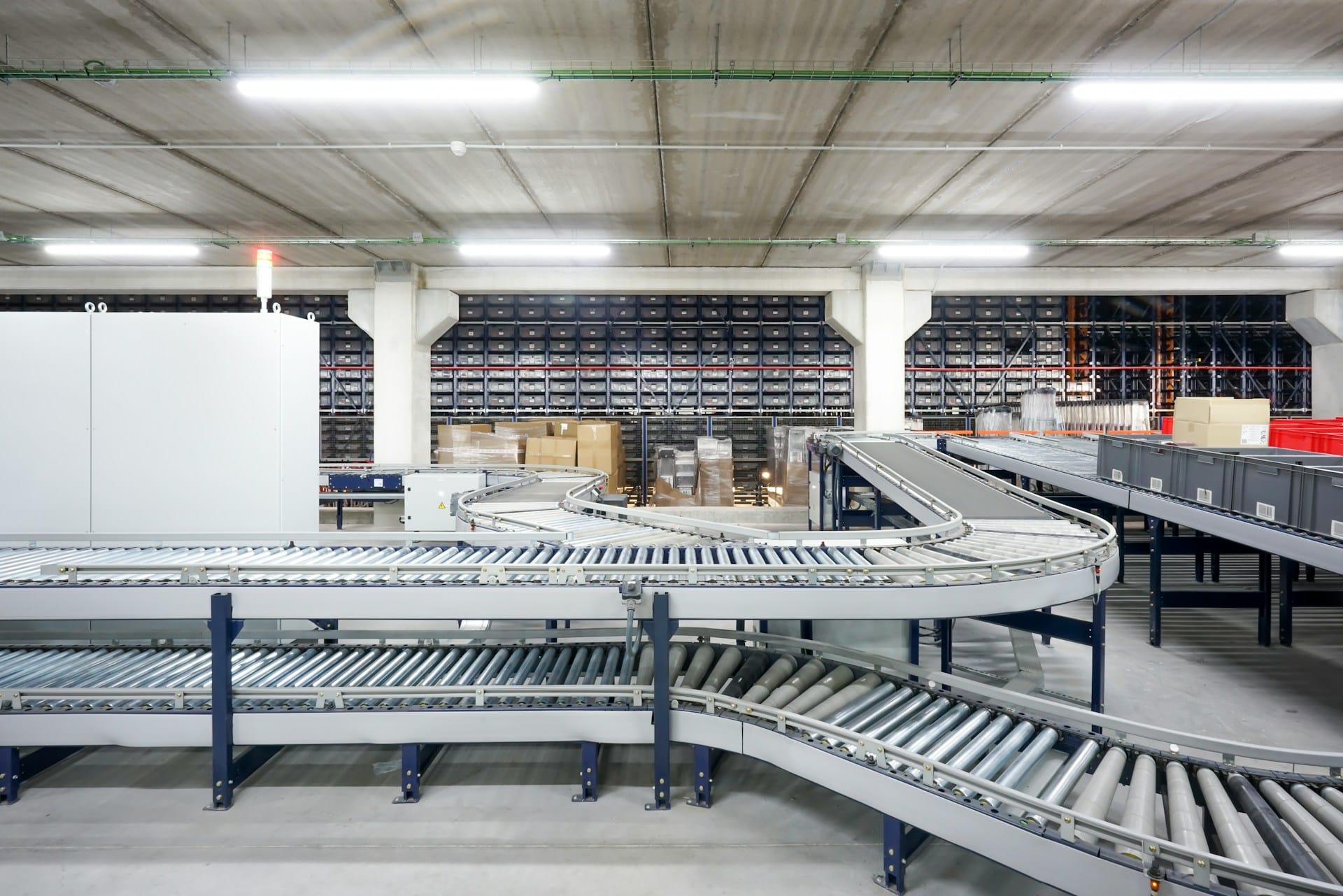Logistics
Warehouse Automation: A World Without Humans – Probably Not

Amazon recently opened a 3-million-square-foot facility in Shreveport, Louisiana, United States, integrating robotics and artificial intelligence (AI) into the fulfillment process. Despite state-of-the-art technology, the facility still relies on human workers. Amazon has hired over 1,400 employees for the operation. Their roles include picking orders, loading and unloading trucks, and overseeing robotic systems.
The Landscape of Warehouse Automation
Warehouse automation is advancing rapidly. The smart warehousing market is projected to grow at a compound annual growth rate (CAGR) of 14.5% from 2024 to 2033, reaching an estimated $78.6 billion by 2033. This growth is driven by the increasing demand for efficient inventory management and logistics operations across various industries.
- Walmart builds AI and machine learning frameworks that utilize historical data on past sales, online searches, and product views to avoid understocking.
- Nike uses an automated handling system interfaced with their warehouse management system (WMS), allowing for faster throughput and higher productivity in a two-million-square-foot facility.
- DHL workers use smart glasses to read barcodes for inventory tracking and order fulfillment. The logistics company employs AI forecasting models to establish route sequences for different products and operates automated sorting systems processing up to 20,000 parcels per hour.
- Ocado, a British online supermarket, operates a highly automated warehouse where swarms of robots navigate a three-dimensional grid to pick and pack grocery orders. This system is controlled by algorithms that ensure efficiency and speed.
A Nuanced Case for Automation
Companies have developed fully automated facilities for standardized goods. However, challenges remain in fully automating more complex tasks. Amazon’s catalog includes over 400 million products with varying sizes, weights, and fragilities. Tasks such as identifying and handling specific items still rely on human dexterity and judgment.
Retailer Kroger has invested in warehouse automation by establishing a robotized fulfillment center in Ohio. The facility houses 1,000 robots working alongside 400 human employees to pick, sort, and move stock-keeping units (SKUs). Automated solutions and robots can handle items faster and more safely than humans, while digital systems analyze available space and inventory levels in real-time to improve warehouse space allocation.
AI and robots handle physically and mentally demanding and repetitive tasks, human employees are essential for nuanced decision-making and activities that require adaptability.
Where Humans Are Essential
While machines excel at performing repetitive tasks efficiently, they typically lack flexibility, nuanced decision-making capabilities, ethical thinking, and relationship-building skills:
- Humans can verify the reliability of AI-generated predictions and decisions, reducing errors caused by data inaccuracies or algorithm biases.
- Critical thinking and judgment skills are essential for making complex decisions that require understanding context and potential impacts on stakeholders.
- Building relationships with suppliers and customers requires empathy and effective communication—areas where humans excel.
- Humans are also better equipped to respond to unexpected challenges in dynamic supply chain situations.
However, relying on human oversight adds operational costs. Furthermore, human involvement can introduce new errors, and the workforce needs to grow in leading economies.
What to Automate and What Not
Routine and cumbersome tasks such as stocktaking, order processing, and data entry are well-suited for automation. Automation benefits these tasks by increasing efficiency and reducing human error. AI excels at processing large volumes of data, helping demand forecasting and inventory optimization. Automated freight and warehouse management systems can handle logistics operations like route planning and transport and delivery optimization, enhancing visibility, reliability, and efficiency.
Warehouse automation can lead to a 25% increase in productivity, a 20% gain in space usage, and a 30% improvement in stock use efficiency.
However, humans are an essential part of success. Automated systems need skilled technicians to maintain machines and troubleshoot issues as they arise. Areas requiring nuanced judgment—such as supplier selection or crisis management—necessitate human oversight capable of managing complexities. Functions involving direct customer and partner interaction highly benefit from human empathy and relationship-building skills.
Finally, it is paramount that management addresses workers' concerns and diligently manages the process. Resistance may hinder the successful implementation of automated systems.
Conclusion
Warehouse automation exemplifies how human oversight will remain the same in the foreseeable future. A worldwide study confirms that blending human labor with robotics leads to greater efficiency than full automation alone. While scalable robotic systems can handle 1,000 tasks per hour, they often face limitations where additional robots do not improve performance. Companies like DHL and CEVA employ human-robot collaboration; results indicate that such hybrids enhance productivity while reducing worker fatigue.
In summary, while warehouse automation is significantly transforming operations—evidenced by companies like Amazon utilizing over 750,000 mobile robots—the integration of human oversight remains crucial for effectively navigating complexities within supply chains. As we look toward the future of warehousing, a collaborative approach between humans and automated systems will yield the best outcomes for efficiency and productivity across industries.
